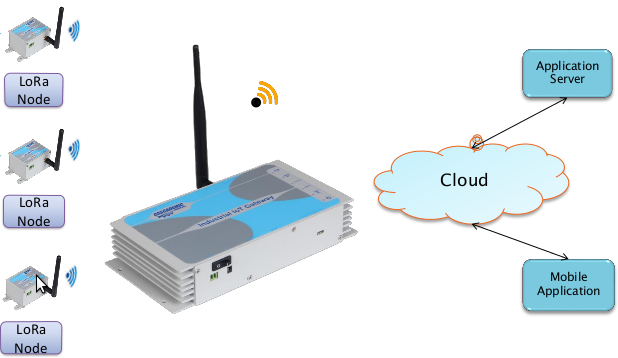LoRa and its suitability for IoT

With the explosion of Connected Devices and the IoT Revolution comes the challenge of choosing the right technology to use to communicate in your IoT application. There are already a myriad of them: WiFi, BT/BLE, ZigBee, Cellular, 6LoWPAN and others, with new standards being born even as we speak. One technology which is widely gaining popularity as particularly suited for Internet of Things is LoRa. WiFi is the most widely used medium-range wireless communication technology today, mainly due to its easy access and wide application – be it home automation, lifestyle products, industrial products, health-care or Smart energy. BT is also universally used for its compatibility with most mobile units, robustness and high throughput, and the low energy version BLE has ultra-low energy benefits. While Wifi, BT and ZigBee all come under personal area networks, if a wider range and more coverage is needed, LoRa is the answer. Lora uses spread spectrum modulation and is specifically designed for long range and longest battery life. For connectivity needs of more than 1 or 2 kms, Lora is most suitable. LoRaWAN uses star topology which enables achieving longer range, which is not easily possible with mesh. With the individual end-nodes forwarding the information of other nodes in a mesh network, the battery life is reduced as nodes receive and forward information from other nodes that maybe irrelevant to them. GSM is a power hungry technology which makes it difficult to use battery operated devices. The main highlight of LoRa is it emulates a GSM network with the advantage of low power. LoRa standard was conceived especially for cases where data is event driven with low latency and small packets. In such cases GSM is not efficient. For these reasons, it makes great sense to use LoRa technology for IoT Appplications like Logistics Systems, Environment Monitoring Systems, Security Systems, Energy Management Systems, Smart Farming, Vehicle, Asset and Manpower Tracking applications and such, where the data is low volume and event triggered. For example, in an Energy Management System, data may be monitored periodically and anomaly events could be set to trigger alerts. While edge-processing can be done depending on the computing capacity of the end-node, typically all processing of the data sent is left to the network server – or the cloud where any amount of analytics is possible. Lora is driven by Open Alliance which means there are standards and documentation published and support provided for setting up your own LoRa network. Since LoRa is more analogous to GSM, it has none of the disadvantages of BT or ZigBee if it is to be compared with either of these technologies. Any LoRa end node can disconnect and join back to the LoRa network anytime without the need to pair, connect or monitor. It is a star topology, and the end-device directly communicates to the gateway. LoRa is a technology with strong emphasis on aiding cloud computing. Since the end module is transparent to any profile information, reconfiguring for different applications is very easy and interoperability is enhanced. As far as the end-node is concerned, it just has to connect to and send data to the gateway, oblivious to the nature of the data. Everything is handled at the cloud level. This aspect of shifting of all the power to the cloud - making it easier to add, disable, monitor any number of nodes through the cloud and also handle and analyze the data as required - makes LoRa very attractive for use in IoT.